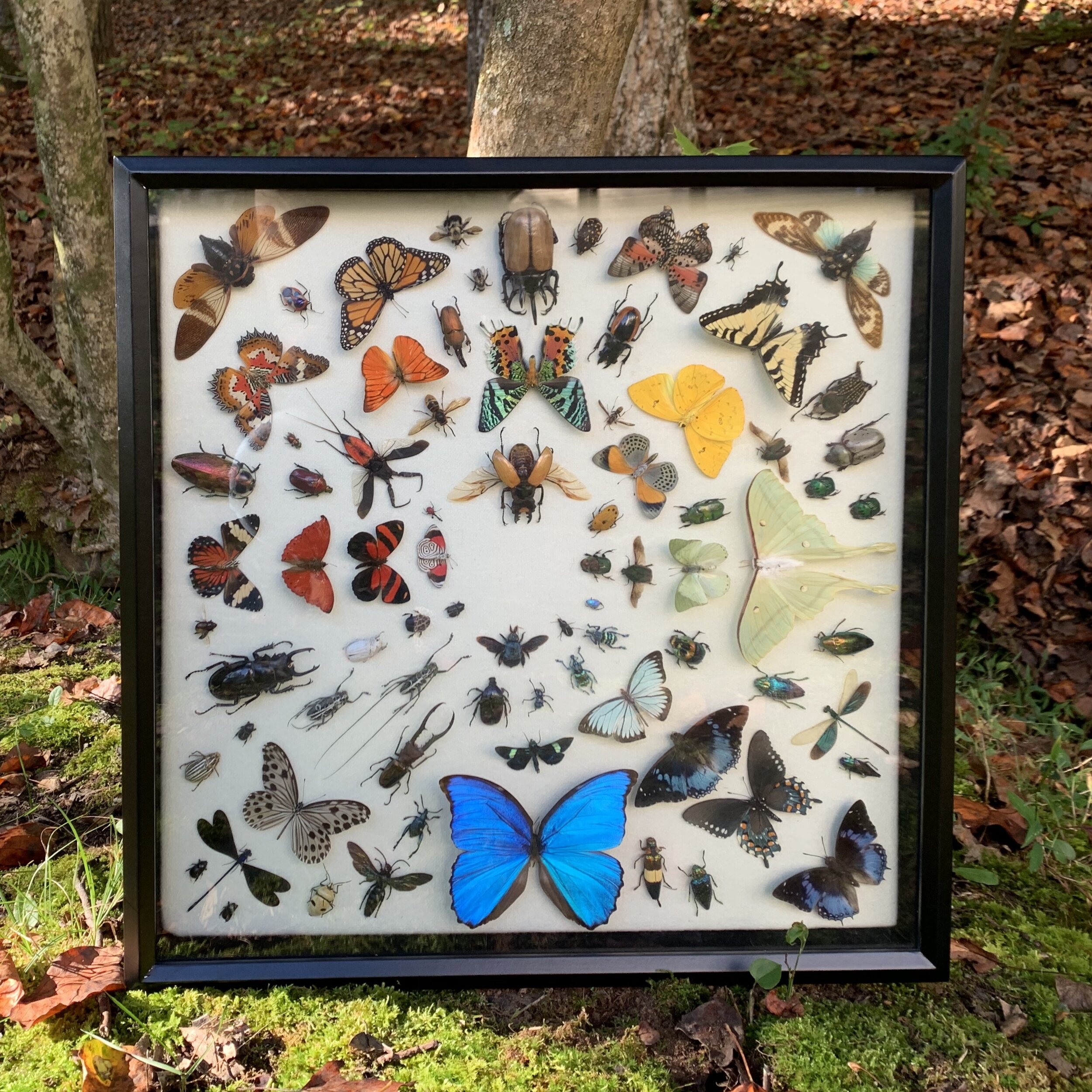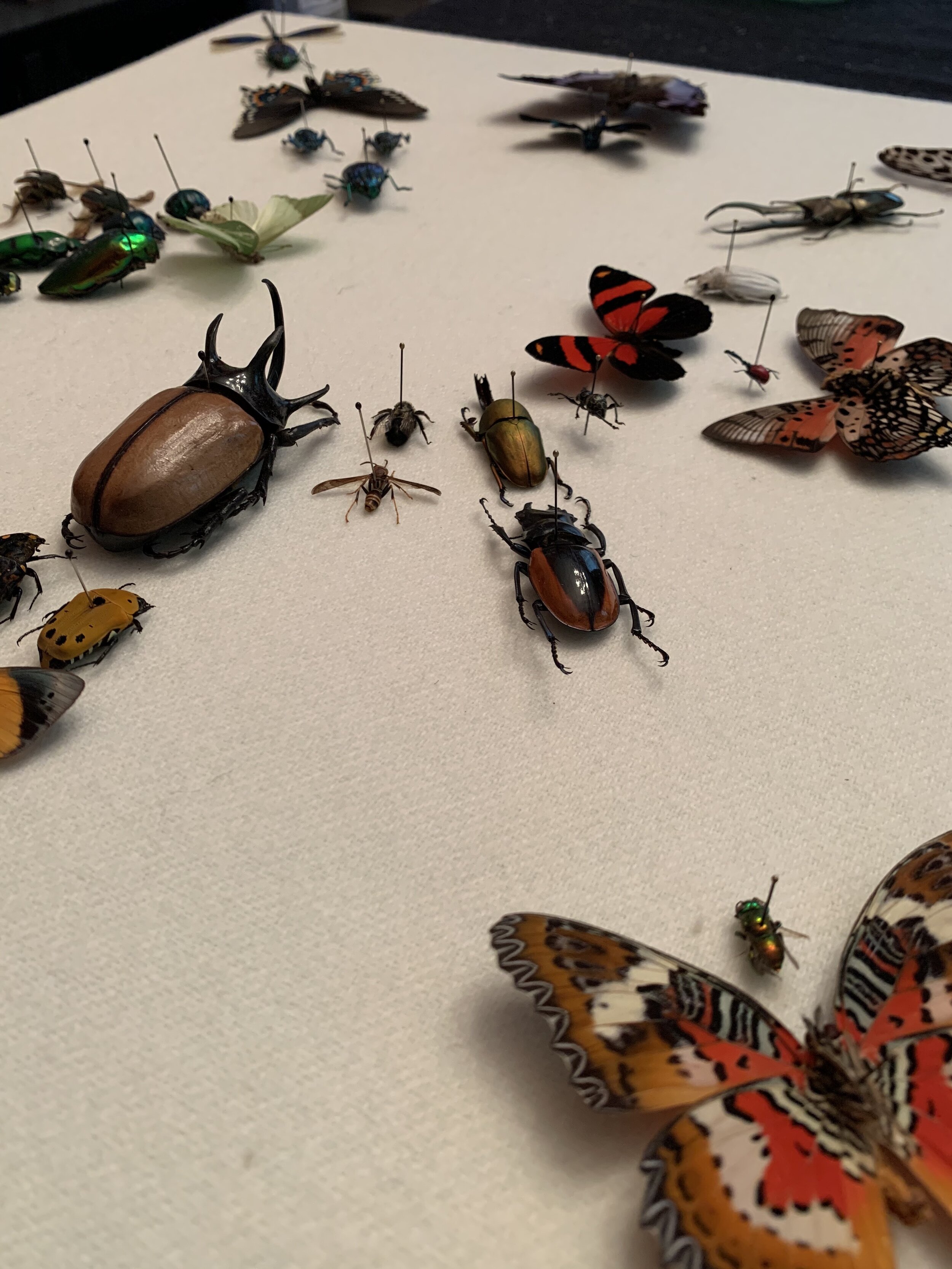Working with Insects
This spring, while everyone was stuck at home, everything was canceled, and most things were closed due to the pandemic, I found myself learning all sorts of new things. Trying out new mediums & hobbies gave me something to look forward to when there wasn’t much else going on. I learned to make gourmet popsicles, got into ice dying on my back porch, and my favorite new thing: insect art.
I had been needle felting insects for years and launched several handmade bug collections in the spring and summer, and I suppose all that research, finding images of beautiful bugs to inspire my felted ones, led me to work with real specimens for the first time.
There’s a lot more to insect art than I expected. First off, you’d think you can just walk around outside and find specimens easily enough, but that wasn’t the case for me. I did find many (already dead) specimens on hikes and walks, but they were rarely in good condition. I did get lucky a few times and was able to find and preserve a found beetle, bee, or butterfly, but I quickly realized I would need to find another source for insects if I wanted to create the large display piece I had in my head.
I was pleasantly surprised to find several reputable bug websites online and the colors, shapes and sizes of insects available was far more interesting than what I would be able to get by happenstance. The bugs can be ordered mounted or unmounted, and so I opted for the unmounted version and learned to do the rehydration and positioning of the specimen myself. It’s definitely an art! I broke off my fair share of legs and antenna on some of my earlier attempts, but I eventually got the hang of things.
This short video shows the process of working with real insect specimens. Although I read my fair share of how-to articles on preserving and mounting insects and there are so many different tips and tricks out there if you’re interested in working with bugs. BIcsBugs.com is a great resource for buying specimens and InsectArt on Etsy is as well.









